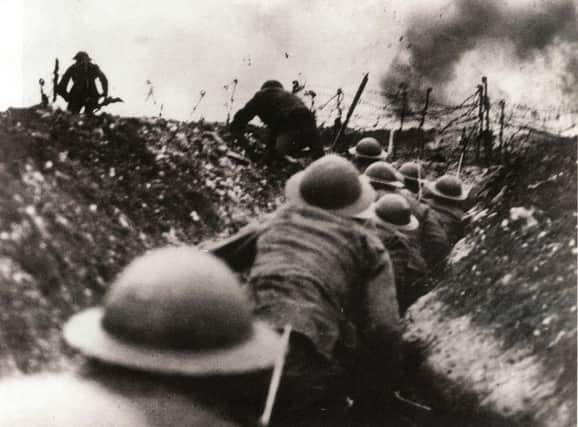Phantom-limb pain still unbearable for soldiers


Surgeons could do little to help First World War amputees suffering from phantom-limb pain after their operations and medical experts say treatment for the condition has “not advanced much” in 100 years.
Research published yesterday in the Lancet by historian Dr Emily Mayhew, pain specialist Professor Andrew Rice and army surgeon Major Dafydd Edwards, all from Imperial College London, found that army doctors in the Great War were helpless to stem the pain for soldiers who lost limbs.
Advertisement
Hide AdAdvertisement
Hide AdA century on, IEDs have made the loss of limbs common once again but, while prosthetic technology has improved dramatically, there is still a shortage of effective treatments for pain caused by damaged nerves.
CONNECT WITH THE SCOTSMAN
• Subscribe to our daily newsletter (requires registration) and get the latest news, sport and business headlines delivered to your inbox every morning
The researchers delved into the Lancet archives to explore how amputation-related pain was understood and treated by army surgeons on the Western Front.
“Our findings were pretty depressing,” said Dr Mayhew, from the department of humanities. “Not much could be done. Although surgeons worked very hard to understand and resolve the chronic pain problems that many amputee patients faced during and after the Great War, they really weren’t able to get to grips with them.”
New weaponry and the scale of the conflict resulted in unprecedented numbers of surviving amputees – 41,000 out of seven million British soldiers deployed during the war. Surgeons had to work quickly, and most amputations were performed using a guillotine.
During the Battle of the Somme in 1916, Marmaduke Sheild, a senior consulting surgeon who treated many military casualties after they returned to England, wrote that post- amputation pain was “a source of intolerable suffering to [his amputee patients], and of despair to those who fit them with artificial limbs”.
According to the researchers, phantom-limb pain was marginalised in medical discussions possibly because surgeons were helpless to do anything about it.
Professor Andrew Rice, from the department of surgery and cancer, said: “We can be pretty certain that phantom-limb pain would have been a common problem among the many amputees who survived the war but, at least in this archive, there was curiously little discussion of it or about its management.
Advertisement
Hide AdAdvertisement
Hide Ad“This rather contrasts with discussions in the modern medical literature.”
SCOTSMAN TABLET AND IPHONE APPS